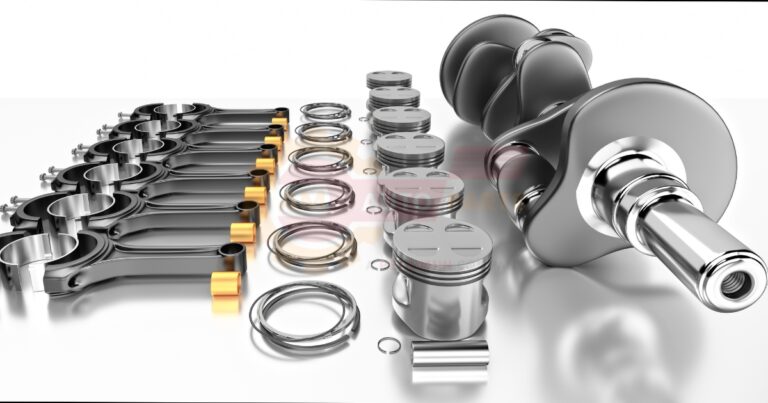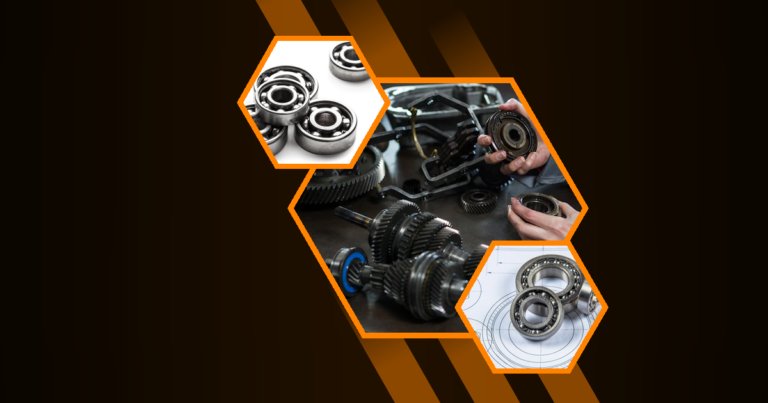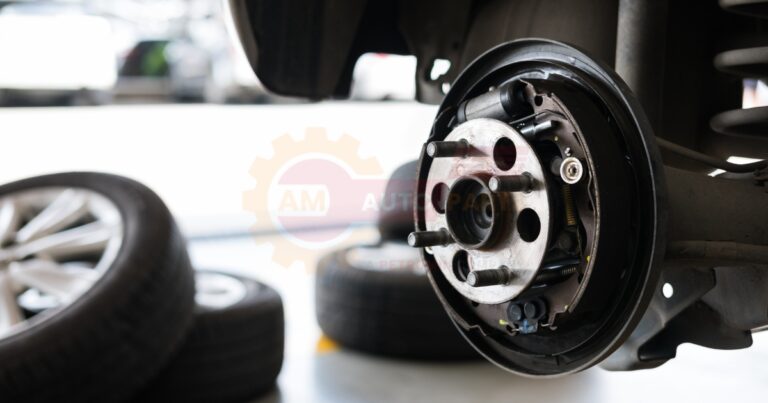Introduction
Rear wheel bearings play a crucial role in your vehicle’s performance and safety. These components allow your wheels to rotate smoothly while supporting the vehicle’s weight. However, like any mechanical part, wheel bearings can wear out over time. Knowing how to tell which rear wheel bearing is bad is essential for maintaining your vehicle’s health and ensuring a safe driving experience. In this comprehensive guide, we’ll explore the signs, symptoms, and diagnostic techniques to help you identify a faulty rear wheel bearing.
How to Tell Which Rear Wheel Bearing is Bad
Common Symptoms
Identifying a bad rear wheel bearing often involves recognizing specific symptoms. These can range from unusual noises to changes in your vehicle’s handling. By familiarizing yourself with these signs, you can catch potential issues early and prevent more severe damage.
Importance of Early Detection
Early detection of a failing rear wheel bearing is crucial for several reasons. First, it can save you money by preventing more extensive damage to your vehicle. Second, it ensures your safety on the road, as a completely failed bearing can lead to wheel separation in extreme cases. Lastly, addressing the issue promptly can help maintain your vehicle’s overall performance and efficiency.
- Cost savings
- Enhanced safety
- Improved vehicle performance
- Prevention of secondary damage
Unusual Noises: Key Indicators of Wheel Bearing Issues
Grinding or Growling Sounds
One of the most common signs of a bad rear wheel bearing is a grinding or growling noise. This sound often becomes more pronounced as you accelerate and may change in pitch when turning. The noise is caused by the damaged bearing’s inability to rotate smoothly, resulting in metal-on-metal contact.
Humming or Whirring Noises
A humming or whirring noise is another telltale sign of a failing rear wheel bearing. This sound is typically constant and may increase in volume as you drive faster. It’s often described as similar to the noise made by an electric motor or a distant airplane.
Clicking or Popping During Turns
When making turns, a bad rear wheel bearing might produce clicking or popping sounds. These noises are often more noticeable during sharp turns or when maneuvering at low speeds, such as in a parking lot. They occur due to the increased stress placed on the bearing during cornering.
- Types of noises:
- Grinding
- Growling
- Humming
- Whirring
- Clicking
- Popping
Vibrations and Handling Problems
Steering Wheel Vibrations
While steering wheel vibrations are more commonly associated with front wheel bearing issues, they can also indicate a problem with a rear wheel bearing. These vibrations may be subtle at first but can become more pronounced as the bearing deteriorates. Pay attention to any unusual feedback through the steering wheel, especially at higher speeds.
Uneven Tire Wear
A failing rear wheel bearing can cause uneven tire wear. As the bearing loosens, it allows for more play in the wheel, which can lead to irregular contact between the tire and the road surface. Inspect your tires regularly for signs of uneven wear, particularly on the inner or outer edges.
Vehicle Pulling to One Side
If your vehicle seems to pull to one side while driving on a straight, level road, it could be a sign of a bad rear wheel bearing. This pulling sensation occurs because the failing bearing creates additional drag on one side of the vehicle, causing it to veer in that direction.
| Symptom | Possible Cause | Action Required |
| Steering wheel vibrations | Worn bearing | Inspect and replace if necessary |
| Uneven tire wear | Loose bearing | Check wheel alignment and bearing condition |
| Vehicle pulling | Increased drag due to failing bearing | Diagnose and replace faulty bearing |
Visual Inspection Techniques
Checking for Loose Wheel Movement
One way to visually inspect for a bad rear wheel bearing is to check for loose wheel movement. Jack up the rear of the vehicle and support it securely with jack stands. Grasp the tire at the 12 and 6 o’clock positions and try to rock it back and forth. Any noticeable movement could indicate a worn bearing.
Examining Brake Rotor and Hub Assembly
Inspect the brake rotor and hub assembly for signs of damage or wear. Look for any discoloration, scoring, or uneven wear on the rotor surface. Check the hub for any visible cracks or damage. These issues can be indicative of a failing wheel bearing putting additional stress on surrounding components.
Inspecting Wheel Seal for Leaks
A damaged wheel seal can allow contaminants to enter the bearing, causing premature wear. Examine the area around the wheel hub for any signs of grease or oil leaks. A compromised seal can lead to bearing failure and should be addressed promptly.
- Visual inspection checklist:
- Check for wheel play
- Examine rotor and hub condition
- Look for seal leaks
- Inspect surrounding components for damage
Advanced Diagnostic Methods
Using a Stethoscope to Pinpoint Noise
A mechanic’s stethoscope can be an invaluable tool for diagnosing wheel bearing issues. By placing the stethoscope at various points around the wheel hub while the vehicle is running, you can often pinpoint the exact location of the noise. This method helps differentiate between bearing noise and other potential issues.
Performing a Road Test
A road test can provide valuable information about the condition of your rear wheel bearings. During the test, pay attention to any changes in noise or vibration at different speeds and while turning. Note whether the symptoms are more pronounced during acceleration, deceleration, or steady-state driving.
Utilizing Specialized Tools
Professional mechanics often use specialized tools to diagnose wheel bearing problems. These may include dial indicators to measure wheel play, infrared thermometers to detect excessive heat, and electronic listening devices for more precise noise detection. While these tools may not be accessible to the average DIY enthusiast, they can provide definitive diagnoses in challenging cases.
| Diagnostic Method | Advantages | Limitations |
| Stethoscope | Precise noise location | Requires some experience |
| Road test | Replicates real-world conditions | May not detect early-stage issues |
| Specialized tools | Highly accurate | Often requires professional expertise |
Differentiating Between Front and Rear Wheel Bearing Issues
Noise Location and Characteristics
Determining whether a wheel bearing issue is in the front or rear of the vehicle often comes down to carefully identifying the location and characteristics of the noise. Rear wheel bearing noises typically seem to come from the back of the vehicle and may be more noticeable to passengers in the rear seats.
Handling Differences
Front wheel bearing issues often have a more pronounced effect on steering and handling, while rear bearing problems may be more subtle. However, severe rear bearing failures can still significantly impact overall vehicle stability and control.
Wheel-Specific Symptoms
Pay attention to whether the symptoms are associated with a specific wheel. For example, if the noise changes when shifting your weight to one side of the vehicle or becomes louder when turning in a particular direction, it can help pinpoint which wheel bearing is problematic.
- Differentiating factors:
- Sound localization
- Impact on steering
- Wheel-specific noise changes
- Effect on vehicle stability
Factors Affecting Wheel Bearing Lifespan
Driving Conditions and Habits
The conditions in which you drive can significantly impact wheel bearing life. Frequent exposure to water, mud, or road salt can accelerate wear. Similarly, aggressive driving habits, such as taking corners at high speeds or frequent hard braking, can put additional stress on wheel bearings.
Vehicle Maintenance Practices
Regular maintenance plays a crucial role in extending wheel bearing life. Proper wheel alignment, balanced tires, and maintaining correct tire pressure can help distribute load evenly and reduce bearing stress. Additionally, following the manufacturer’s recommended service intervals for bearing inspection and lubrication is essential.
Quality of Replacement Parts
When replacing wheel bearings, the quality of the parts used can greatly affect their longevity. AM Autoparts recommends using high-quality, OEM-equivalent bearings to ensure optimal performance and durability. Inferior parts may wear out more quickly, leading to frequent replacements and potential safety risks. Crankshaft bearing maintenance Regularly check and replace worn crankshaft bearings to keep your engine running smoothly and prevent costly damage
Bearing vehicle parts are important pieces that help car wheels spin smoothly These parts reduce friction and allow different vehicle components to move easily Bearings hub essentials are important parts that help wheels spin smoothly They keep the wheel connected to the car and make sure it turns properly
Automobile Bearing Quantity refers to the number of bearings used in a vehicle These bearings help parts move smoothly and reduce friction in the automobile Bearing replacement guide shows you how to swap out old bearings for new ones It helps you fix machines by replacing worn-out parts called bearings
Wheel bearing expense is the cost of replacing worn-out bearings in your car’s wheels These parts help your wheels spin smoothly and need to be changed when they get old or damaged Crankshaft bearing types are special parts that help the crankshaft spin smoothly inside an engine They come in different shapes and sizes to fit various engines and support the crankshaft’s movement
| Factor | Impact on Bearing Life | Mitigation Strategy |
| Harsh driving conditions | Accelerated wear | Regular cleaning and inspection |
| Poor maintenance | Increased stress and wear | Follow manufacturer’s service schedule |
| Low-quality parts | Premature failure | Use reputable suppliers like AM Autoparts |
DIY vs. Professional Diagnosis
Tools Required for Home Inspection
For a basic home inspection of rear wheel bearings, you’ll need a few essential tools:
- Jack and jack stands
- Lug wrench
- Flashlight
- Gloves
- Mechanic’s stethoscope (optional)
While these tools can help you perform a preliminary check, they may not be sufficient for a comprehensive diagnosis.
Benefits of Professional Assessment
Professional mechanics have access to specialized diagnostic equipment and extensive experience in identifying wheel bearing issues. They can often detect problems in their early stages, potentially saving you from more costly repairs down the line. Additionally, professionals can safely perform the necessary repairs, which often require specialized tools and expertise.
When to Seek Expert Help
While some DIY enthusiasts may feel comfortable diagnosing and even replacing wheel bearings, there are times when professional help is necessary. If you’re unsure about the source of a noise or vibration, if the symptoms are severe, or if you lack the tools or experience to safely perform the inspection, it’s best to consult a professional mechanic.
- Reasons to seek professional help:
- Uncertain diagnosis
- Lack of proper tools
- Safety concerns
- Complex repair requirements






